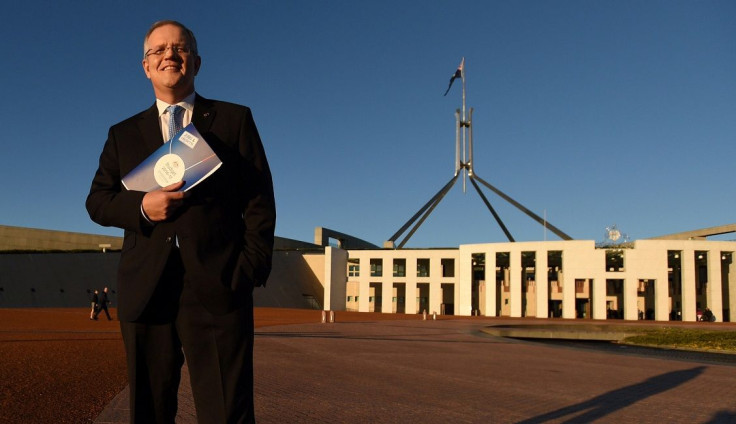Morrison: Australian Budget 2016-17 is an ‘economic plan,’ to support jobs and growths

Australia’s Budget 2016-17 is an “economic plan.” Scott Morrison presented his first budget plan as treasurer on Tuesday, outlining the need for a more diverse economy and announcing a ten-year enterprise plan to support jobs and growths.
The Turnbull Government hopes to balance the budget by supporting job growths through lower tax rates for more businesses. It aims to keep expenses down to balance the budget and pay down the debt.
As the mining industry continues to be unstable, the government is turning its focus on a more diverse economy. The budget allots considerable portion to the national innovation and science agenda, as well as the previously announced cyber security offensive strategy.
With control spending, the Government said the deficit in underlying cash balance terms will reduce from $39.9 billion in 2015-16 to $37.1 billion in the next year. This amounts to 2.2 percent share of the economy. For the next four years to 2019-20, the deficit is expected to fall to $6 billion, or 0.3 percent of GDP.
Ten Year Enterprise Tax Plan
As part of the plan, the Federal Government aims to increase the size of the economy permanently by over 1 percent through jobs creation. It will start with tax cuts for small and medium-sized enterprises. This was previously announced last year, with businesses with a turnover of less than $2 million per annum getting a 1.5 percentage point reduction in tax rate.
From July 1, the small business tax rate will be lowered to 27.5 percent. Small businesses with $10 million or lesser turnover are qualified, and which will therefore affect 870,000 businesses employing 3.4 million Australians. These small enterprises will have their tax rate reduced, including a 2.5 percentage point cut in the tax rate for up to 60,000 businesses with a turnover between $2 million an $10 million.
The turnover threshold for access to lower company tax rate of 27.5 percent will increase every year. From $10 million, it will step up to $25 million in the 2017-18 budget. For 2018-19, it will go up to $50 million, and to $100 million in 2019-20. This will ensure that more than half of all employees of companies in the country, around 4.9 million employees, will be employed by companies paying a lower tax rate of 27.5 percent.
For the second phase of the plan, the 27.5 percent rate will be reduced to 25 percent at the end of 10 years in 2026-27. The turnover threshold will also continue to increase each year until 2023-24.
As Morrison explained, these measures will reduce revenue by $5.3 billion over the next four years, but the reduction will be fully offset by the increased revenue derived from the revenue and integrity measures in the budget.
Preventing full-time wage earners from moving up in the tax bracket
As part of the tax reform plan, the upper limit for middle income tax bracket will increase from $80,000 to $87,000 per year from July 1. This will ensure those who are earning average wages, or around 500,000 taxpayers, will stay in the middle income tax bracket, allowing them to earn more without being taxed more.
About two-thirds of those earning less than $80,000 a year in taxable income use negative gearing. Morrison said the government will not remove or limit negative gearing as it would only increase the tax burden on Australians.
“We do not consider that taxing these Australians more on their investments, including increasing their capital gains tax, and undermining the value of their own home and investments is a plan for jobs and growth,” the treasurer reasoned out.
“This modest tax relief demonstrates that, wherever possible, we prefer to leave a dollar in Australians’ pockets than take it for the Government’s pocket, because we know that it is money in your pocket that can help you and your family most.”
Tax Avoidance Taskforce
The Australian Government has also announced a new Tax Avoidance Taskforce to crackdown multinational tax avoidance and security revenue. The Australian Taxation Office will be provided with $679 million budget over four years to strengthen efforts in ensuring multinational companies, private companies and high wealth individuals pay the right amount of tax.
The Taskforce, accountable to the Government, will employ around 1,300 jobs in the ATO, including 390 specialised officers, and will be led by ATO Commissioner of Taxation Chris Jordan.




















